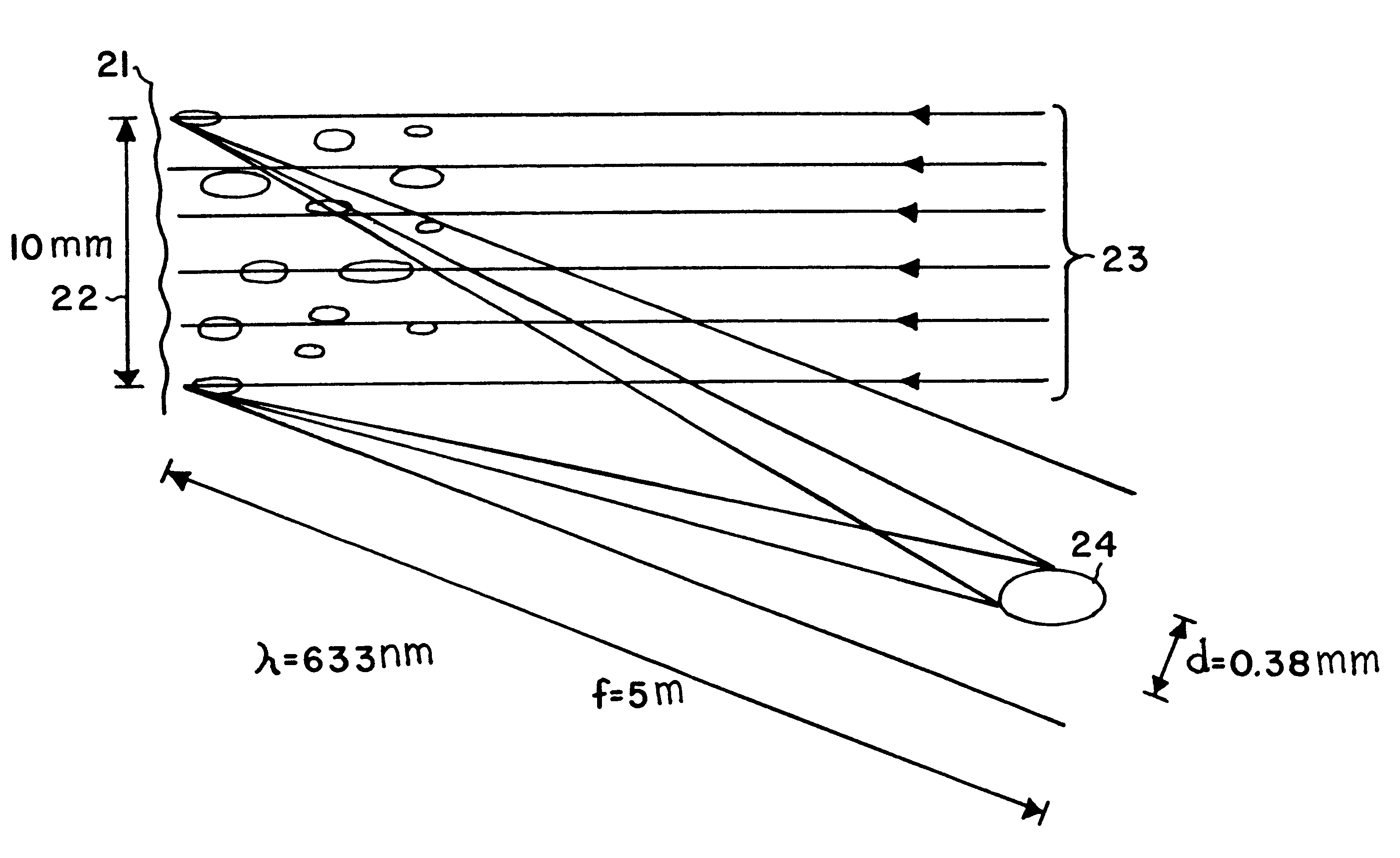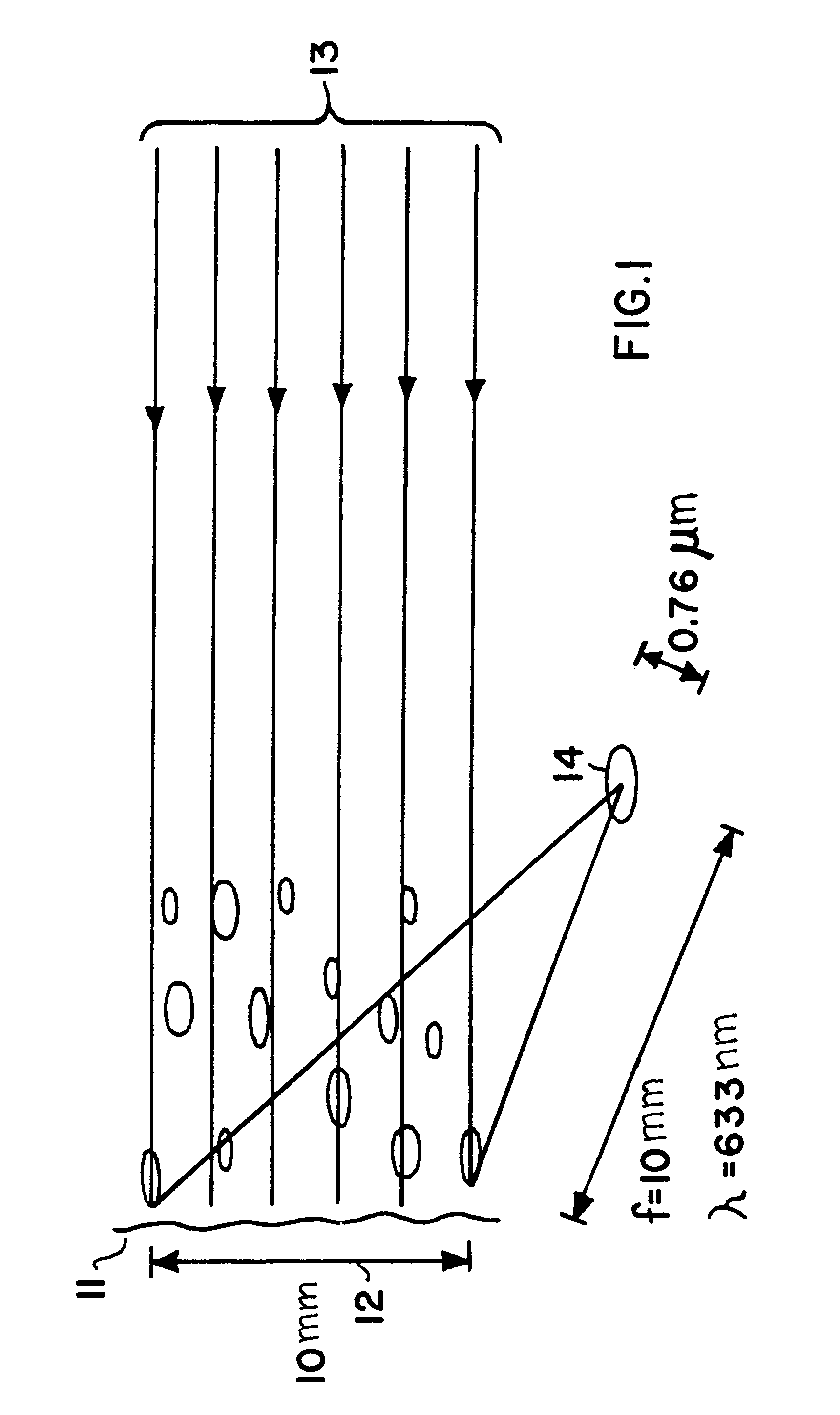Method and device for eliminating image speckles in scanning laser image projection
a laser image and laser beam technology, applied in projectors, color televisions, television systems, etc., can solve the problems of interference, strong additional intensity modulation of the brightness distribution of the image screen, and the disappearance of the advantages of laser radiation
- Summary
- Abstract
- Description
- Claims
- Application Information
AI Technical Summary
Benefits of technology
Problems solved by technology
Method used
Image
Examples
Embodiment Construction
FIG. 1 shows the speckles in the near field of the projection screen 11. For a distance of 10 mm from the image spot 12 of an incoming projection beam 13 having a diameter of 10 mm, the speckles 14 have a diameter in the range of about 1 .mu.m for a wavelength .lambda.=633 nm. By way of a relative phase shift between the upper and lower edge of up to 2 .pi. it is possible to shift a speckle over its diameter and thereby average it away in the eye of the viewer with regard to space and time.
FIG. 2 shows speckles 24 in the distant field of the projection screen 21 corresponding to the situation of a large image laser projection 23 with a viewer spacing of 5 m and an image spot diameter 22 of 10 mm. The speckles 24 at the point of a viewer are already relatively large with a diameter of about 0.5 mm. A relative phase shift of the upper edge to the lower edge of the illumination beam provides only an unnoticeable displacement of the speckle at the viewer, whereby a reduction of the spec...
PUM
 Login to View More
Login to View More Abstract
Description
Claims
Application Information
 Login to View More
Login to View More - R&D
- Intellectual Property
- Life Sciences
- Materials
- Tech Scout
- Unparalleled Data Quality
- Higher Quality Content
- 60% Fewer Hallucinations
Browse by: Latest US Patents, China's latest patents, Technical Efficacy Thesaurus, Application Domain, Technology Topic, Popular Technical Reports.
© 2025 PatSnap. All rights reserved.Legal|Privacy policy|Modern Slavery Act Transparency Statement|Sitemap|About US| Contact US: help@patsnap.com



